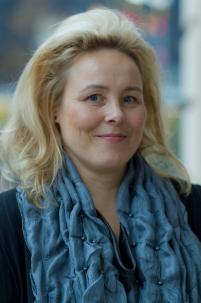Building communication and staff engagement at Loviisa
Features
Vol 31 No 1 2021
25 January 2021
Satu Katajala, Site Vice President and Plant Manager at Fortum’s Loviisa nuclear power plant, explains how building communication and staff engagement in the organisation’s goals has helped drive performance
 Real change takes time. It requires perseverance and patience.
Real change takes time. It requires perseverance and patience.
In our case, the plant’s management received feedback through internal assessments and staff surveys. It showed that the link between the importance of each member of staff’s own job to the strategy of the Fortum Group and the power plant wasn’t always clearly understood.
In 2014, our maintenance team built a strategy using the plant’s communications tools to remedy this communication challenge. The basic foundation of this strategy consisted of skilled and competent personnel performing within a high-level safety culture. And then, the next elements of the strategy consisted of the plant’s main processes working together, and of course the result is safe, reliable and profitable electricity production. In the annual surveys that followed, this strategy-related communications shortcoming was no longer raised as an issue.
In the WANO peer review in 2015, we receive an area for improvement that management’s expectations had not been established and communicated enough. To correct this shortcoming, we requested a WANO technical support mission on ownership and accountability. We had many expectations, targets and indicators, but there were too many of them for a single year.
Consequently, the key target for the organisation was not clear and this resulted into a fragmented unit with different teams with different targets. The technical support mission helped our management team to prioritise and select primary common goals which were shared by all personnel each year. In our case, we had three main targets each year.
Following this, in the next Operational Safety Review Team (OSART) mission in 2018, we received feedback that the management’s targets had been established but not implemented fully in the field. So, to remedy this, we worked together and established a development project around themes, with a management team member responsible for each of the three themes and goals, and we built communications material for each of them.
The communication material provided us with the reason why each annual theme was so important in achieving our strategic targets. Nowadays, our three key goals are clear. They are present everywhere at the power plant, in our operations and our way of working.
In February 2020 we received an OSART mission and received good feedback on our progress. This has provided us with the confidence to continue along the path we’ve already embarked on. We are on the right track, but there is still a lot of work to do on the journey towards operational excellence and our targets with WANO.
This process is all about continuous improvement, as even when you are at the top, you’ll find there are more improvements you can implement. Within all this, it is very important that any change made is authentic and lasting. At our plant, we believe that every one of us is an example to each other – supervisors to their colleagues, and all employees to their colleagues and service provider representatives.
Nowadays despite COVID-19, we have succeeded in completing our autumn annual outage work as planned. The annual outage of Loviisa Unit 2 has already been completed, and the work on Unit 1 is at the midpoint. There has been excellent adherence to the COVID-19 guidelines by those working in annual outages.
Cooperation and the sharing of lessons learnt, between our power plants and globally have been open and immediate. The organisations have received significant support from each other. I believe that COVID-19 is clear in terms of communication - everyone understands why the actions are being taken. It is also possible that we will be able to take some positive learnings from the pandemic that we can apply when implementing other targets.
So in summary, my main lessons learnt in our journey from leadership point of view is firstly that the real change takes time. In our case, six years have passed, but we are midway on our journey to excellence. We have a 10 year plan and this requires perseverance and patience.
The second key point is that as a manager or management team, you need to prioritise and select your primary goals and explain why you are focusing on them to your colleagues. You cannot focus on too many things at the same time.
Thirdly, as a manager you are always setting an example at work and even outside the work. You need to practice how you preach.
And from a leadership point of view, we all are examples to each other, it doesn’t require you to be a manager.
And the fourth learning, is ensure you have an open leadership - communicate and discuss with your staff and believe in the best of them.
As a leader, if you believe in your people, this empowers them to believe in themselves, to grow and exceed expectations. Leaders can create a work environment and company culture that helps employees to thrive. If you expect the best, believe in your staff and provide them with a good work environment, you can expect them to deliver good results.